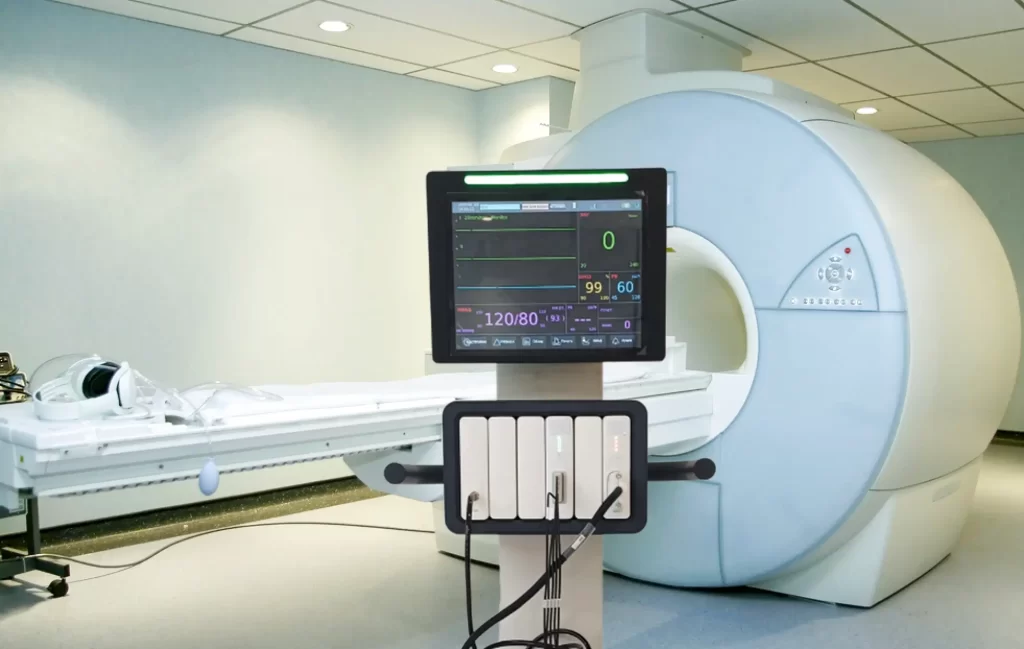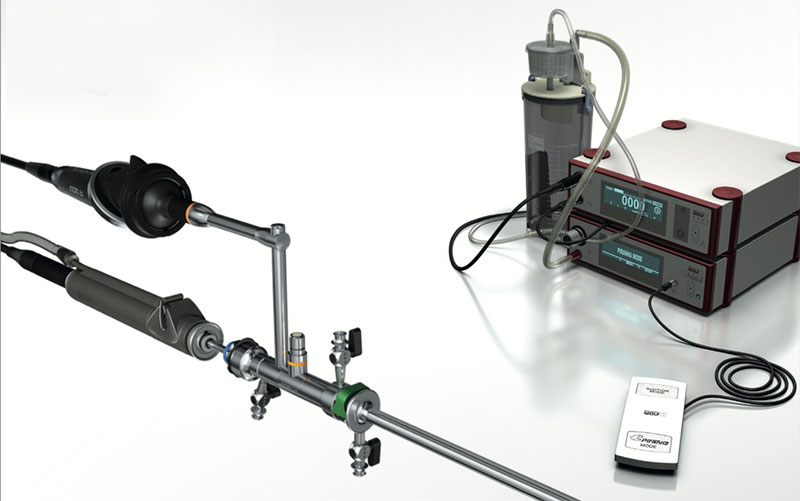With the increasing demand for precision medicine and high-end diagnosis and treatment, MRI-compatible monitors are increasingly used in high magnetic field environments, especially in monitoring patients’ vital signs during MRI examinations. For hospital purchasers, equipment department heads or medical device traders, how to choose a stable, safe and reliable MRI monitor is a professional and realistic question.
This article will clarify the key points of purchasing MRI-compatible monitors to help you make more scientific purchasing decisions.
What is an MRI Compatible Monitor?
An MRI-compatible monitor,also named as MRI monitor, is a multi-parameter device designed to monitor the patient’s vital signs in an MRI environment. It can usually monitor ECG, blood oxygen saturation (SpO₂), respiratory rate, blood pressure, body temperature, and other data in real-time under high magnetic field conditions (such as 1.5T or 3.0T) and is an important safety guarantee tool in MRI examinations.
5 factors to consider when you purchase MRI-compatible monitors
When purchasing MRI compatible monitors, the following core indicators must be focused on:
- Magnetic field compatibility
- Supported magnetic field strength (such as 1.5T, 3.0T, or even 7.0T)
- Whether it has MRI certification/compatible certification (MR Conditional)
- Whether it provides RF interference shielding and artefact suppression technology
- Monitoring parameters
- ECG (electrocardiogram) monitoring channel number and anti-artifact capability
- SpO₂ (blood oxygen) monitoring technology (such as Masimo or Nellcor technology)
- Whether NIBP (non-invasive blood pressure), body temperature, EtCO₂ (end-tidal carbon dioxide), etc. are supported
- Whether the multi-parameter modular design supports expansion
- Signal transmission method
- Fiber optic signal transmission or wireless transmission (to ensure that it is not interfered with by the magnetic field)
- The safe distance between the receiving end and the operating end (usually more than 3 meters)
- Battery and power system
- Whether it is a battery dedicated to magnetic resonance without electromagnetic interference
- Whether the battery life can meet the requirements of long-term inspection (e.g. > 6 hours)
- Whether hot-swappable battery replacement is supported
- Human-computer interaction experience
- Whether the display size and resolution are clear and readable
- Whether the Chinese and English interface switching is supported
- Whether the control method is intuitive and whether there are preset inspection modes (adult/child/anaesthesia, etc.)
Use the environment and actual needs that need to be paid attention to before purchasing
Different hospitals or departments have different requirements for MRI compatible monitors:
MRI room support: full parameter monitoring, strong magnetic field anti-interference ability
Anaesthesia monitoring: support EtCO₂, anaesthesia gas monitoring module
Children/neonates: high-frequency sampling, accurate blood oxygen and ECG monitoring
Remote consultation/research: data export interface, DICOM compatibility
Brand and after-sales service recommendations
The current mainstream MRI compatible monitor brands:
- Invivo (under Philips)
- Schiller (Switzerland)
- IRadimed (USA, focusing on MRI monitoring)
- Uzzmed
When purchasing, we recommend to choose:
- Brands with CE/ISO certification
- The manufacturer provides a complete after-sales solution (installation, training, maintenance response time)
- Long-term support for consumables and accessories (such as lead wires, blood pressure cuffs, sensors, etc.)
Budget
Recommended budget range (based on parameter configuration):
- Basic type (applicable to physical examination centres): about $30,000-$50,000
- Multi-parameter high-configuration type (applicable to tertiary hospitals or surgical anaesthesia): about $55,000-$100,000
Where to Buy MRI-Compatible Monitors?
Uzzmed offers a wide range of MRI-compatible monitors designed to meet diverse clinical needs. You can choose monitors with or without ECG monitoring functions, tailored for MRI examinations. As a professional manufacturer, Uzzmed also provides comprehensive ODM and OEM services to help you expand your MRI product line and build your brand in your local market.
Conclusion
Reasonable configuration to ensure the safety of diagnosis and treatment
MRI compatible monitors are important equipment to ensure the safety of MRI examinations. When purchasing, you should combine the department’s specific needs using them, balance performance and cost, and prioritise brands that have passed certification, mature technology, and reliable services. Through scientific selection, the inspection efficiency can be improved, and a solid guarantee can be provided for the safety of patients’ lives.
Please contact uzzmed if you have any questions about purchasing MRI compatible monitors. We can provide product selection suggestions, technical comparison materials, and one-stop procurement solution support.



